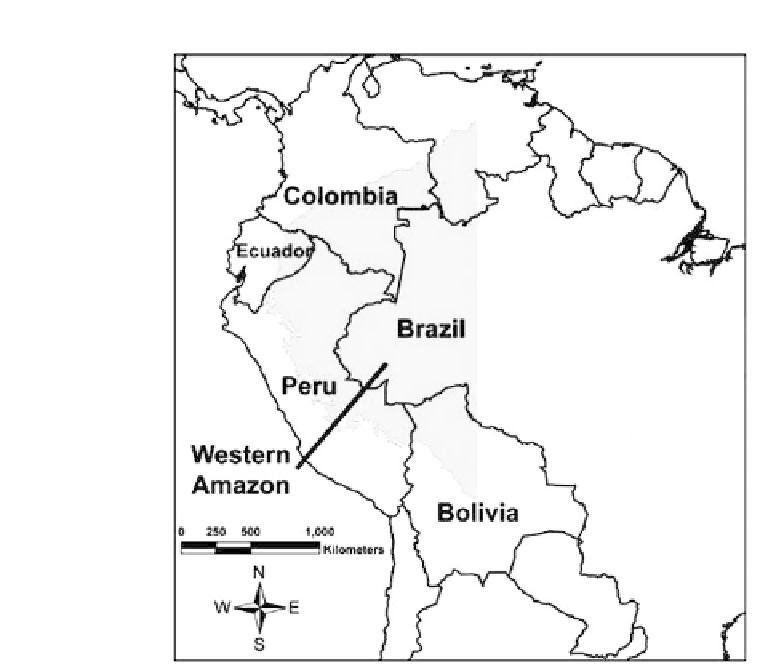Environmental Engineering Reference
In-Depth Information
Figure 1.
Study area of the western Amazon.
Underlying this landscape of extraordinary biological and cultural diversity are
large reserves of oil and gas, many yet untapped. Record oil prices and growing global
demand are now stimulating unprecedented levels of new oil and gas exploration and
extraction. It is the nations of the region, and not the indigenous peoples who live on
much of the land, who assert their constitutional ownership of subsoil natural resourc-
es. National governments delimit specifi c geographic areas or “blocks” that are zoned
for hydrocarbon activities, which they may lease to state and multinational energy
companies for exploration and production.
Oil exploration in the western Amazon started as early as the 1920s in Peru [14]
and Ecuador [15], with a production boom arriving in the 1970s. The subsequent three
decades have seen numerous large projects, such as several oil projects in the central
Ecuadorian Amazon, the Urucu gas project in Brazil, and the Camisea gas project in
Peru.
Oil and gas development in the western Amazon has already caused major envi-
ronmental and social impacts 16-19. Direct impacts include deforestation for access
roads, drilling platforms, and pipelines, and contamination from oil spills and waste-
water discharges. The technologies of the 1970s-era oil operations caused widespread
















Search WWH ::

Custom Search